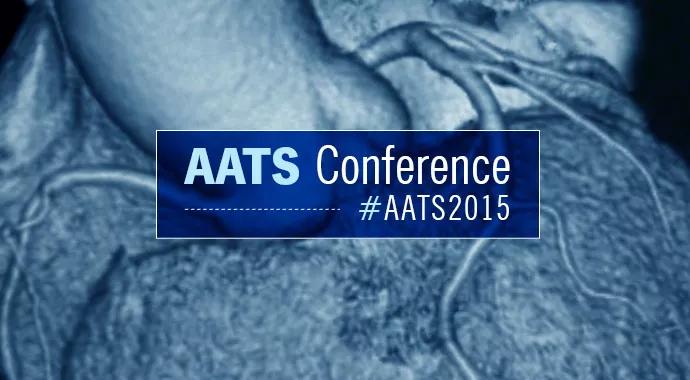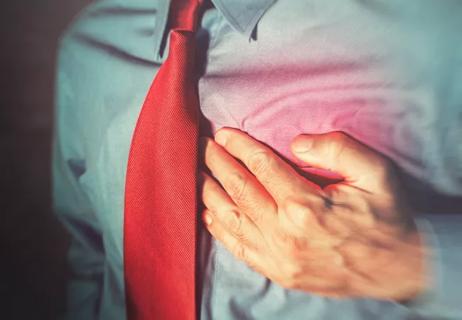Despite tradeoffs, valve preservation and biologic grafts come out ahead most often

Four common aortic root procedures — valve preservation, composite graft with mechanical valve, composite graft with biological valve, and allograft — offer excellent long-term survival and good durability for patients with aneurysms. So finds a large Cleveland Clinic study presented today at the 95th Annual Meeting of the American Association for Thoracic Surgery that compared outcomes of the four surgical strategies.
Cleveland Clinic is a non-profit academic medical center. Advertising on our site helps support our mission. We do not endorse non-Cleveland Clinic products or services. Policy
“Valve-preserving and allograft procedures produced the lowest gradients but tended to result in late regurgitation,” says lead study author Lars G. Svensson, MD, PhD, Chairman of Cleveland Clinic’s Sydell and Arnold Miller Family Heart & Vascular Institute. “Despite such tradeoffs, we recommend valve-preserving procedures for young patients when possible, while composite bioprostheses are reasonable for the elderly.”
Valve-preserving aortic root procedures have become increasingly popular, with good results lasting longer than 10 years. The authors previously showed that reimplantation for tricuspid aortic valves and repair of bicuspid valves resulted in superior durability over time, compared with biologic composite valves.
Additionally, newer techniques for bicuspid valve repair, including higher commissure implantation, have resulted in a low risk of death (0.47 percent) and stroke (0.25 percent) and better long-term durability. However, how these procedures compared with mechanical composite grafts or allografts was unknown.
The study examined the outcomes of 957 patients who underwent nonemergent aortic root surgery for aneurysms at Cleveland Clinic between January 1995 and January 2011. In each case, the choice of procedure was determined by the surgeon in consultation with the patient.
End points were as follows:
Patients who underwent a valve-preserving procedure tended to be younger and to have lower rates of regurgitation, stenosis and left ventricular dysfunction. They had large aneurysms but were less likely to have a bicuspid valve, valve calcification or heart failure.
Patients who received a biologic composite graft tended to be older and more symptomatic and to have more ventricular hypertrophy.
Over the course of the study, valve-preserving and biologic composite graft procedures increased in number, mechanical composite graft procedures declined, and allograft procedures remained stable.
Across the overall study population, aortic root surgery resulted in a 0.73 percent in-hospital mortality rate and a 1.4 percent stroke rate. Rates of death and stroke were similar among procedure types. There were no in-hospital deaths among patients receiving valve-preserving procedures.
Valve-preserving and allograft procedures produced lower early mean gradients than composite grafts with either biologic or mechanical valves. “The net result was that left ventricular remodeling was most successful with valve preservation,” says Dr. Svensson.
Aortic valve regurgitation increased over time, particularly in the valve-preservation and allograft groups. More regurgitation was seen following composite graft replacement with a mechanical valve than with a biologic valve. Although valve-related complications were not fully examined, valve-preserving procedures and allografts were less likely to cause bleeding, hemorrhage and endocarditis.
Freedom from reoperation varied by strategy and by early vs. late reoperation. The risk of early reoperation was highest with valve preservation and lowest with allograft replacement. The risk of late reoperation was highest with allograft replacement and lowest with composite mechanical graft replacement and valve preservation.
“The downside of valve preservation was early risk of reoperation, although this was specifically related to the remodeling of bicuspid valves,” notes Dr. Svensson. “Reimplantation of tricuspid aortic valves provided excellent results.”
Based on these findings, the team of Cleveland Clinic researchers recommends the following aortic root procedures for different types of aneurysms and patients:
“With the exception of cases of endocarditis, we continue to advocate valve preservation and biologic composite grafts as preferable to allografts,” Dr. Svensson says.

Further acute testing not needed if ECG and high-sensitivity troponin are negative

Scott Cameron, MD, PhD, also brings wide-ranging research interests to bear

Pioneering U.K. vascular surgeon joins Cleveland Clinic

AHA statement is first comprehensive document on perioperative stroke reduction

Recognition reflects prioritization of long-term patient outcomes

Recommendations help distinguish exercise-induced remodeling from pathology

JACC review highlights factors unique to women, ways to tailor management

Pushing the envelope in ablation of atrial fibrillation, ventricular tachycardia